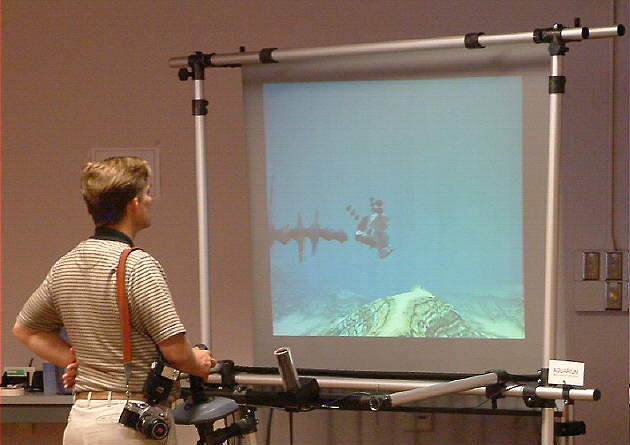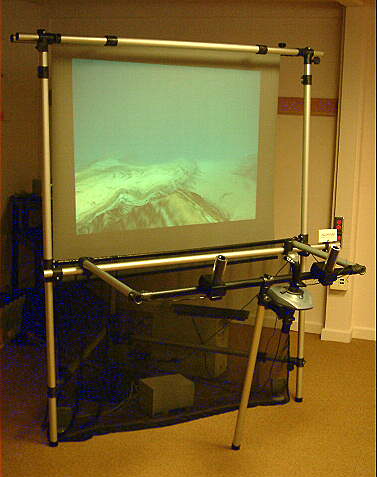- The lighting of the venue was difficult to control-- lower was better
for the projection, but the rest of the room was mostly filled with traditional artwork (paintings,
photos, sculptures) that needed plenty of light. It appears a acceptable compromise was
reached but there is likely more that can be done in the future.
- The creature "evolver" program ran on a few available PC's around the
convention, which turned out to be scarce resources making it impossible
to keep the program always available and inviting. In the future we'll
need to dig up some additional PCs to be configured dedicated for that purpose.
Despite these issues, the exhibit was well recieved by the attendees, and operated reliably
for the duration of the convention.
| |











